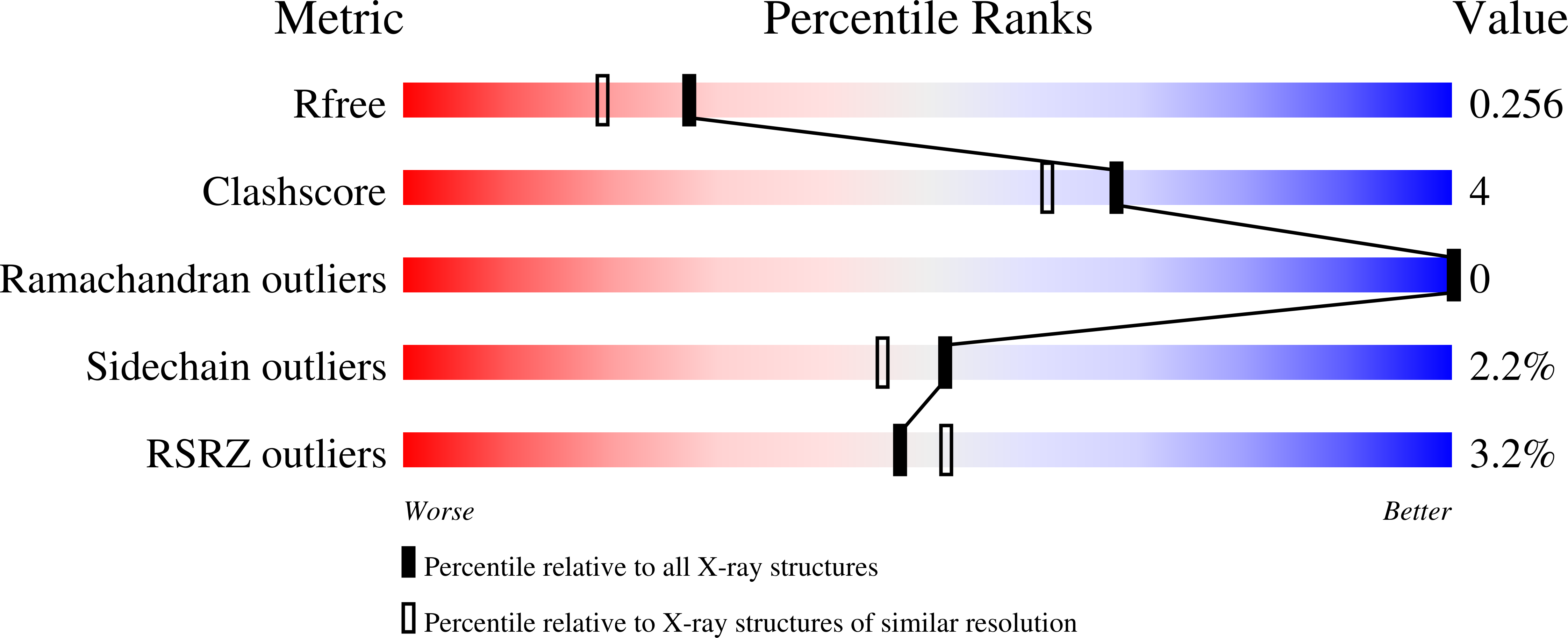Crystal structures of the short-chain flavin reductase HpaC from Sulfolobus tokodaii strain 7 in its three states: NAD(P)(+)(-)free, NAD(+)(-)bound, and NADP(+)(-)bound
Okai, M., Kudo, N., Lee, W.C., Kamo, M., Nagata, K., Tanokura, M.(2006) Biochemistry 45: 5103-5110
- PubMed: 16618099
- DOI: https://doi.org/10.1021/bi052313i
- Primary Citation of Related Structures:
2D36, 2D37, 2D38 - PubMed Abstract:
4-Hydroxyphenylacetate (4-HPA) is oxidized as an energy source by two component enzymes, the large component (HpaB) and the small component (HpaC). HpaB is a 4-HPA monooxygenase that utilizes FADH(2) supplied by a flavin reductase HpaC. We determined the crystal structure of HpaC (ST0723) from the aerobic thermoacidophilic crenarchaeon Sulfolobus tokodaii strain 7 in its three states [NAD(P)(+)-free, NAD(+)-bound, and NADP(+)-bound]. HpaC exists as a homodimer, and each monomer was found to contain an FMN. HpaC preferred FMN to FAD because there was not enough space to accommodate the AMP moiety of FAD in its flavin-binding site. The most striking difference between the NAD(P)(+)-free and the NAD(+)/NADP(+)-bound structures was observed in the N-terminal helix. The N-terminal helices in the NAD(+)/NADP(+)-bound structures rotated ca. 20 degrees relative to the NAD(P)(+)-free structure. The bound NAD(+) has a compact folded conformation with nearly parallel stacking rings of nicotinamide and adenine. The nicotinamide of NAD(+) stacked the isoalloxazine ring of FMN so that NADH could directly transfer hydride. The bound NADP(+) also had a compact conformation but was bound in a reverse direction, which was not suitable for hydride transfer.
Organizational Affiliation:
Department of Applied Biological Chemistry, Graduate School of Agricultural and Life Sciences, University of Tokyo, 1-1-1 Yayoi, Bunkyo-ku, Tokyo 113-8657, Japan.
















